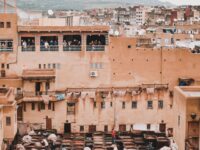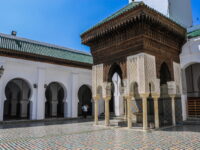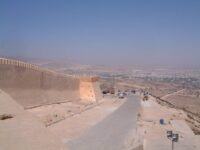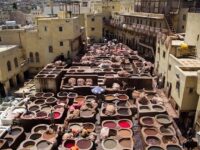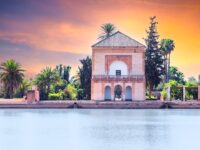Medina of Marrakech

Surrounded by the ramparts, the Medina of Marrakech corresponds to the Almoravid city fortified around 1060. It was originally a military camp and a market. In the 12th century, it was necessary to build a Kasbah (fortified fortress) to defend against external attacks. In addition to the Jemaa El Fna square (the starting point of many visits), the tanners’ quarter and the souks, you can venture into the small alleys and typical neighborhoods where many families still live. Next to the rudimentary of their dwelling, you may discover sumptuous riads, small palaces, museums, mosques, etc. The Medina is 1,000 visits at once and you will need more than your stay in Marrakech to discover all its mysteries.
The Medina of Marrakech is the largest in the Maghreb and the most concentrated in population, with an area of 600 hectares, and the wall that surrounds it is 19 km long, 8 to 10 meters high and 1.60 to 2 meters thick.
But what exactly is the Medina?
It is everything that is inside the ramparts built of red clay adobe. In the past, it was a military camp, then a market, and finally, a fortified city. Thus you can discover, of course, all the souks (dyers, cabinetmakers, apothecaries, scrap metal dealers, weavers, grocers, dressmakers, jewelers, etc…), the tanners’ district where leather is made that will later become bags, luggage, clothing, objects, but also a multitude of small picturesque streets.
The best thing to do is to go on an adventure on foot from the Jemaa El Fna square (the most important square in the Medina, an oral heritage of humanity). You will quickly realize that the place contains several types of streets. First of all, the commercial streets, wide and populated: souks, fondouks (square courtyards surrounded by large buildings), cafes, etc.; then the smaller typical streets where you can see huge doors behind which are often hidden riads (large houses built around a garden).
Some of them can be visited if you meet the guardians of these small palaces. By going up on the terraces you may have the chance to see the spectacle of this lively city with its special light. One would never suspect that such constructions could be found behind these large wooden or iron doors. Finally, the derbs, tiny streets where most Marrakchis live.
Video
They are often dead ends but worth a look (old wooden doors, mud and lime walls, cobblestones). You will see children having fun, young people strolling around, older people playing cards; it’s a real city within a city. Almost every neighborhood has a mosque and a hammam and life has been the same for generations.
Unfortunately, for some years now, tourists have been buying up pieces of the Medina to build sumptuous resorts without always taking into consideration the cultural heritage of the place or the very particular architecture. Some, for example, build swimming pools on the roofs, endangering the subsoil and the pipes are put to severe tests. Fortunately, some foundations are working hard to contribute to a rational restoration or to help those who want the Medina of Marrakech to remain one of the world’s most typical and best preserved heritages.
What to see in the medina
- The central square Jemaa El Fna
- The souk of Marrakech
- The museums of the city: the museum of Marrakech, the Dar Si Said museum and the small house Tiskiwin,
- the Royal Palace, official residence of the King of Morocco when he visits the city (it is not open to the public)
- Bahia Palace and the Medersa Ben Youssef with its mosque
- The Koutoubia, with its minaret
- The Saadian tombs, with their exquisitely decorated mausoleums.https://goo.gl/maps/kVzXenVojhXe8htu7


